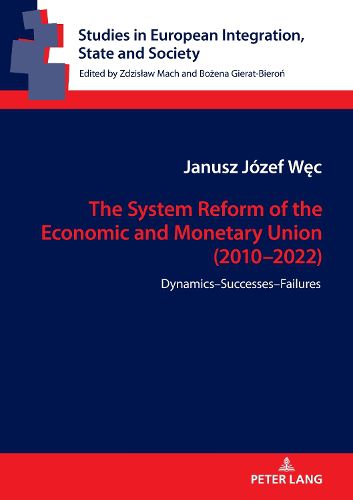Readings Newsletter
Become a Readings Member to make your shopping experience even easier.
Sign in or sign up for free!
You’re not far away from qualifying for FREE standard shipping within Australia
You’ve qualified for FREE standard shipping within Australia
The cart is loading…






This title is printed to order. This book may have been self-published. If so, we cannot guarantee the quality of the content. In the main most books will have gone through the editing process however some may not. We therefore suggest that you be aware of this before ordering this book. If in doubt check either the author or publisher’s details as we are unable to accept any returns unless they are faulty. Please contact us if you have any questions.
This book has two research objectives. The main objective is to present the dynamics of the system reform of the Economic and Monetary Union in 2010-2022. The other is to take stock of the reform and to highlight its successes and failures. In this context, the monograph puts forward two research hypotheses. The first hypothesis assumes that the shortcomings in EU primary and secondary law regarding the Economic and Monetary Union and the course of the euro area debt crisis were two main reasons for reforming the EMU, whereby the crisis in question actually forced the European Union and the euro area countries to implement the reform. The second hypothesis is based on the assumption that the implementation of the system reform encountered many difficulties and obstacles arising from the negative attitude of the governments of some euro area Member States to the execution of selected projects, but also from the accumulation of various severe crises that the European Union faced during the reform, in particular the euro area debt crisis, the migration crisis, the pandemic crisis and the geopolitical crisis following Russia's aggression against Ukraine. The research hypotheses were verified using a triangulation of several qualitative methods: case study, institutional-legal method, comparative method, and critical analysis of sources and literature.
$9.00 standard shipping within Australia
FREE standard shipping within Australia for orders over $100.00
Express & International shipping calculated at checkout
This title is printed to order. This book may have been self-published. If so, we cannot guarantee the quality of the content. In the main most books will have gone through the editing process however some may not. We therefore suggest that you be aware of this before ordering this book. If in doubt check either the author or publisher’s details as we are unable to accept any returns unless they are faulty. Please contact us if you have any questions.
This book has two research objectives. The main objective is to present the dynamics of the system reform of the Economic and Monetary Union in 2010-2022. The other is to take stock of the reform and to highlight its successes and failures. In this context, the monograph puts forward two research hypotheses. The first hypothesis assumes that the shortcomings in EU primary and secondary law regarding the Economic and Monetary Union and the course of the euro area debt crisis were two main reasons for reforming the EMU, whereby the crisis in question actually forced the European Union and the euro area countries to implement the reform. The second hypothesis is based on the assumption that the implementation of the system reform encountered many difficulties and obstacles arising from the negative attitude of the governments of some euro area Member States to the execution of selected projects, but also from the accumulation of various severe crises that the European Union faced during the reform, in particular the euro area debt crisis, the migration crisis, the pandemic crisis and the geopolitical crisis following Russia's aggression against Ukraine. The research hypotheses were verified using a triangulation of several qualitative methods: case study, institutional-legal method, comparative method, and critical analysis of sources and literature.